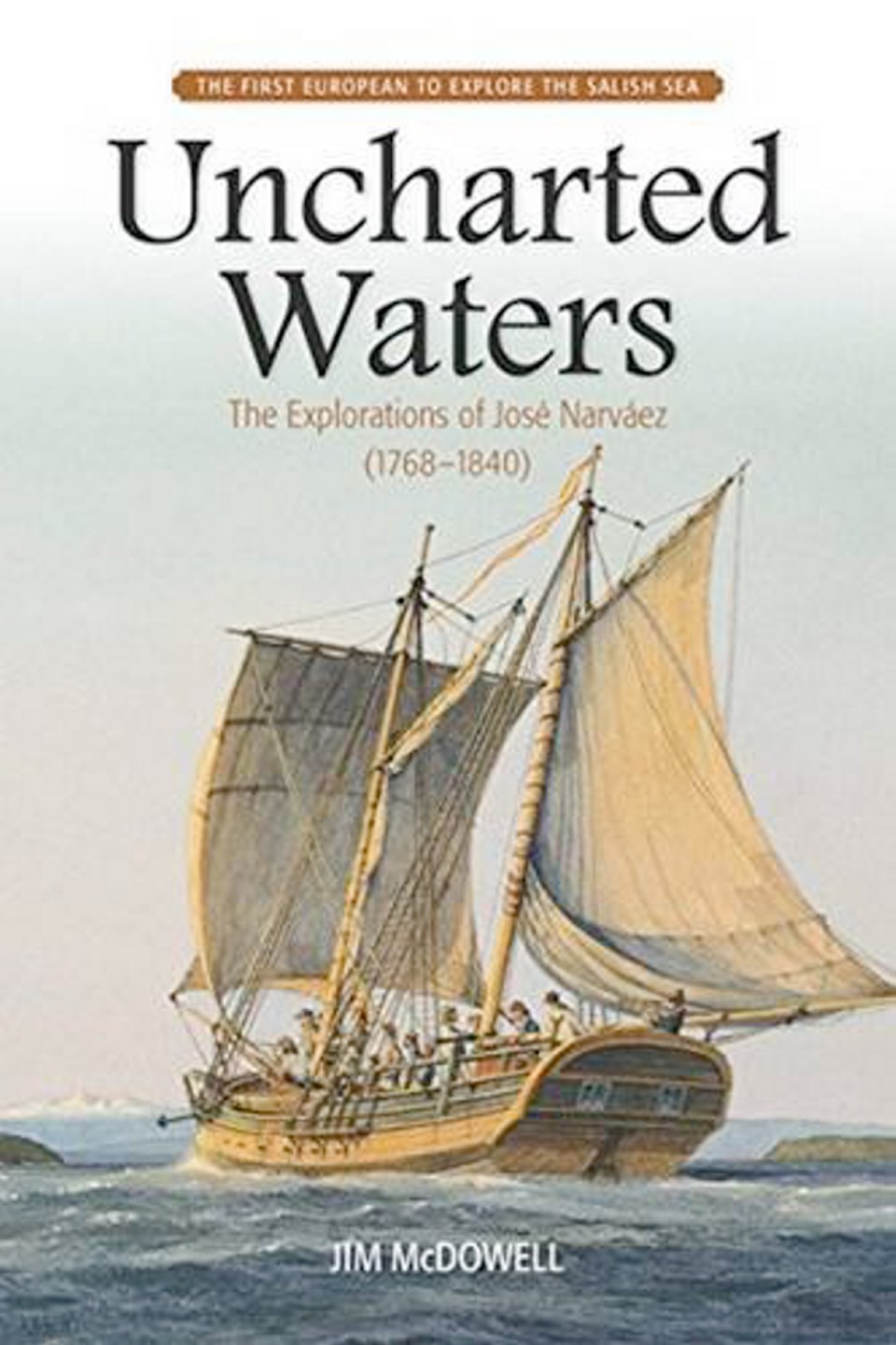Uncharted Waters: The Explorations of José Narváez (1768-1840)
By Jim McDowell
Ronsdale, 321 pp., $24.95
Spanish explorer José Maria Narváez is not well-known, even though he was the first European to venture into the Salish Sea, according to biographer Jim McDowell.
In Uncharted Waters, McDowell leads us through the life of Narváez, and attempts to fill in some major gaps in the historical record.
In so doing, he challenges some other historians, and the theories that they have presented.
He rejects, for example, the notion that English navigator Sir Francis Drake was in these waters, referring to the suggestion as “incredible” and “implausible.” He also rejects the theory that Greek mariner Juan de Fuca was here, saying that researchers in Spanish colonial archives have never been able to find any evidence of such a voyage.
Narváez was born in Cadiz, a port city in Spain.
He was the first person from western Europe to see the Russian fur-trading activities in the Gulf of Alaska in 1788. The following year, he was the first Spaniard to explore Juan de Fuca Strait.
In the late spring of 1791, Narváez created charts of three large inlets on the west coast of Vancouver Island and explored and mapped the Salish Sea. His work formed the basis of mapping and exploration on both sides of today’s international boundary.
His work was possible because of the assistance of local First Nations, a point made abundantly clear by McDowell. He might have been the first European to visit much of this region, but he was hardly the first person here.
(And, strictly speaking, many European men arrived here at the same time as Narváez. He was not alone on his ship; there were 21 other men.)
After his work in the Pacific Northwest, Narváez created charts of the waters of the Philippines, and became embroiled in the political activities in New Spain that saw it become Mexico.
He died in Mexico in 1840, leaving a legacy that has been under-appreciated until the publication of this book.
McDowell has done a superb job in bringing together the story of Narváez, and gives his readers a highly detailed appreciation for the explorer. He puts his subject into context, in terms of geography and history.
The rich detail should not be a surprise to anyone who read McDowell’s book on Father August Brabant, which was published in 2013.
It would pay for the reader to have a detailed map of Vancouver Island at hand when reading Uncharted Waters. The book can be hard to follow at times because of the rapid-fire references to islands, points, bays and so on.
It can be hard to keep track of where we are, despite the many maps included in the book. A few more might have helped.
But that is a detail, and it can be overcome.
As McDowell writes, Narváez’s voyage was “one of the most impressive pioneering European explorations” in the history of our waters, and produced one of the most important nautical charts of the period.
That his work has been underappreciated is no fault of Narváez; events pushed him to the sidelines. One of the key events was the shift to English control, from Spanish, of these waters.
The name of the explorer can be found today on streets in Saanich and Vancouver, a bay on Saturna Island, an island on the west coast of Vancouver Island and a few other locations.
But despite that, his contribution to our history needs to be better known. Uncharted Waters might help take us there.
The reviewer is editor-in-chief of the Times Colonist.



